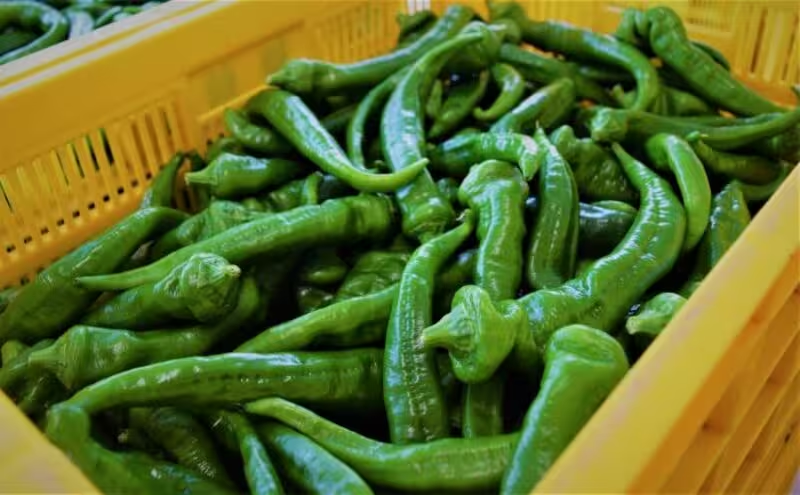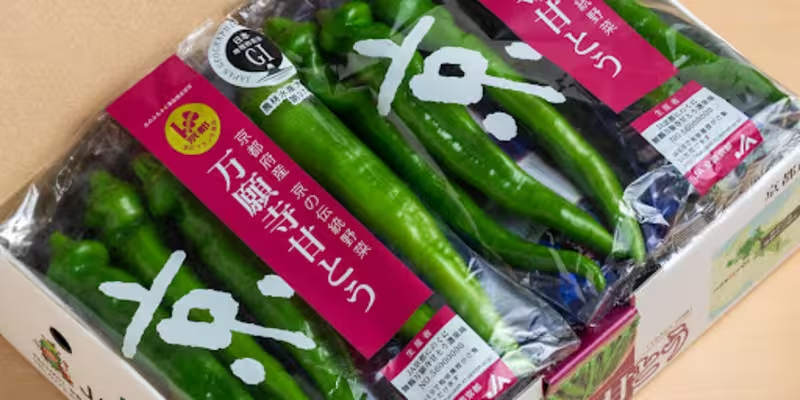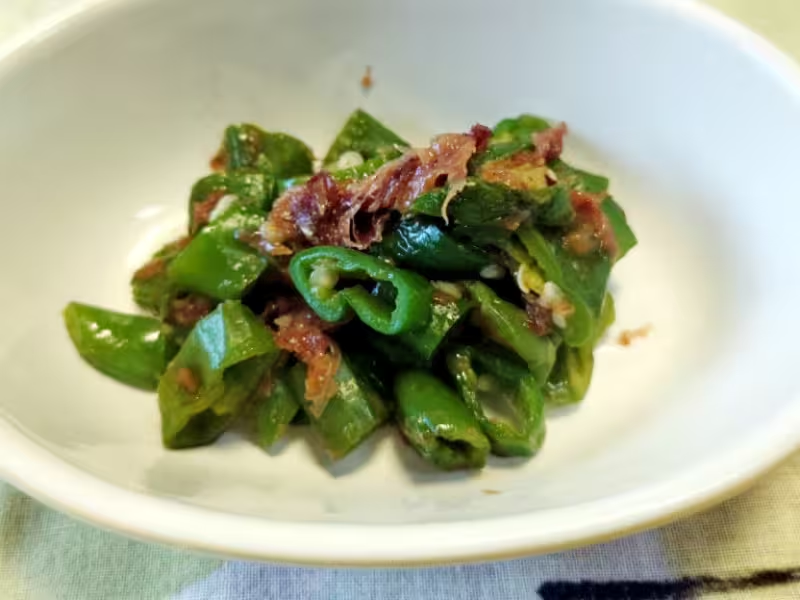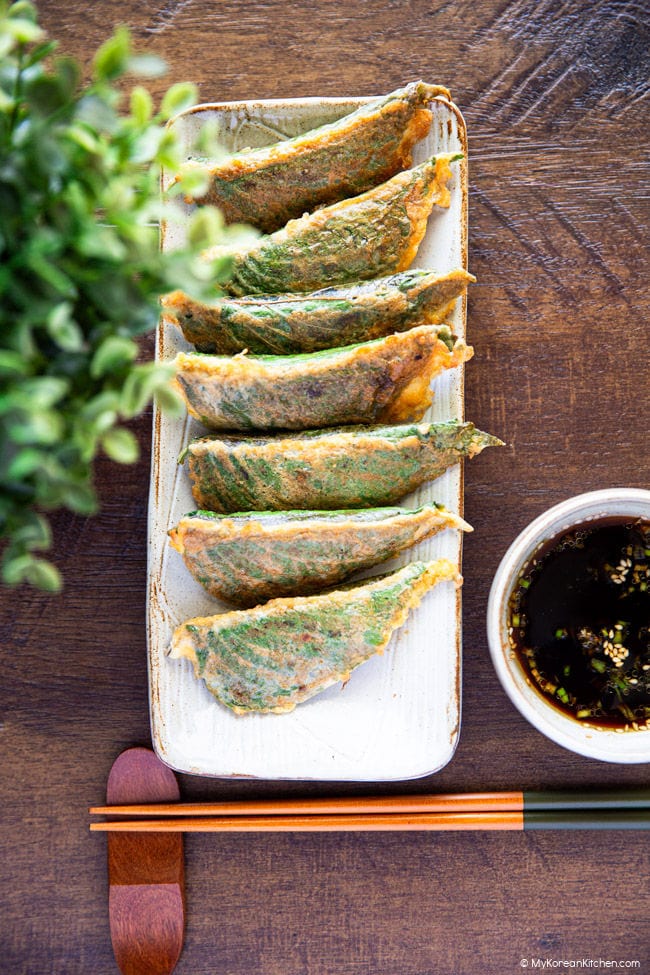This article will introduce you to the Manganji sweet pepper, a huge, flavorful vegetable from Kyoto, Japan. We will look at what makes this pepper special, where it came from, and a great place where you can try it. Keep reading to find out why this simple vegetable became one of Kyoto’s most famous local foods.
What is Manganji Pepper?

The Manganji pepper (known in Japanese as Manganji Amato) is an extra-large sweet pepper that comes from the chili pepper family, but it is famous for having virtually no heat or spice. Because of this sweet nature, anyone, including children, can enjoy it without worry.
This pepper stands out because of its size—it can grow to be 13 to 23 centimeters long—and its thick, tender flesh. Unlike other peppers, it has few seeds, making it easy to prepare and eat. Its appearance is unique, featuring a sleek, long shape and sometimes slightly wrinkled shoulders. The Manganji pepper is versatile in the kitchen; while it’s great grilled with soy sauce and bonito flakes, its sweet, soft volume also makes it perfect for stir-fries, deep-frying as tempura, or being simmered in broth. It is in season during the summer and early autumn, typically from mid-May to late October.
History of the King of Sweet Peppers

The Manganji pepper has its roots in the town of Manganji in Maizuru City, located in the northern Kyoto Prefecture. First appeared around the end of Japan’s Taisho period and the beginning of the Showa period, roughly in the 1920s. Experts believe it was born from a natural mix between the traditional Kyoto Fushimi pepper and an older Asian pepper variety.
For many years, the pepper was difficult to grow and was mainly kept a local secret, cultivated by farmers for their own meals. However, thanks to dedicated effort in farming techniques, they sold it outside the local area in 1983. Its high quality and unique taste led to it becoming the very first item certified as a “Kyoto Brand Product” in 1989. This official status secured its reputation as the “King of Japanese Chili Peppers” and a key representative of Kyoto’s regional vegetables.
Reference: Manganji Sweet Peppers
Where to Try It: A Local Restaurant
Totogen Nishimaizuru-ten (魚源 西舞鶴店)

If you visit Maizuru, the pepper’s birthplace, a recommended place to try fresh, seasonal dishes is Totogen Nishimaizuru-ten (魚源 西舞鶴店). Located right next to a fresh fish shop, this local diner focuses on featuring the best seasonal ingredients from the Maizuru area, including the Manganji sweet pepper when in season, alongside fresh seafood and local produce.
Address: 263-18 Hikitsuchi, Maizuru City, Kyoto, 624-0841 Japan
Phone Number: 0773-77-5534
Hours Open: Lunch: 11:00 AM – 2:00 PM; Dinner: 5:00 PM – 10:00 PM (Closed Thursdays)
Website: https://www.totogen.net/
Conclusion
The Manganji sweet pepper is a testament to the dedication of Kyoto farmers who turned a difficult-to-grow local vegetable into a nationally recognized brand. Its size, soft texture, and sweet flavor make it an excellent and healthy addition to any meal, providing a rich source of vitamins and a pleasing taste without the burn of a regular chili.
We highly recommend that you seek out and try this Kyoto specialty. Once you have enjoyed the Manganji sweet pepper, you might also enjoy other regional dishes that use it, such as Manganji sweet pepper stuffed with meat, Manganji sweet pepper and dried sardine simmered dish (Takiitan), or Manganji sweet pepper tempura.
You can also look up in this article the different Kyoto’s traditional vegetables or popularly known as Kyo Yasai.
FAQ
What is Manganji Amatou?
A traditional Kyoto sweet pepper known for its mild flavor and gentle sweetness. It looks like a long green chili but isn’t spicy.
Where does it come from?
Originally from the Manganji area in Maizuru City, Kyoto Prefecture. It is one of the famous Kyo-yasai (Kyoto heirloom vegetables).
What does the name mean?
“Manganji” is the place name, and “Amatou” means “sweet pepper” in Japanese.
When is it in season?
Mainly from early summer to autumn (around June to October).
What does it taste like?
Mild, slightly sweet, and juicy. It has a soft texture and no heat like chili peppers.
How is it usually cooked?
Grilled, pan-fried, tempura, or simmered in light soy sauce broth. Often simply roasted and topped with bonito flakes or miso.
Where can tourists try it?
Local restaurants in Kyoto, especially those serving Kyo-yasai dishes, or in izakaya and summer food markets.
Where can I buy it?
Kyoto markets like Nishiki Market, local greengrocers, and department store food halls (depachika).
How do I pick a good one?
Look for glossy green skin, firmness, and no wrinkles or brown spots.
How should I store it?
Keep in the refrigerator in a plastic bag. Use within a few days for best taste and texture.
Is it spicy at all?
Very rarely. Most are completely mild, but occasionally one might have a slight kick — it’s part of the fun!
Is it vegetarian or vegan-friendly?
Yes, the pepper itself is plant-based. Just check the cooking method (some dishes use bonito or dashi).
Any allergy concerns?
Generally safe. Just confirm seasonings if you have soy or fish allergies.
Useful Japanese phrases
“Is this Manganji Amatou?” — これは万願寺甘とうですか? Kore wa Manganji Amatou desu ka?
“Not spicy, right?” — 辛くないですか? Karakunai desu ka?
“I’d like to try this one, please.” — これをください。 Kore o kudasai.

 21 hours ago
4
21 hours ago
4









 English (US) ·
English (US) ·